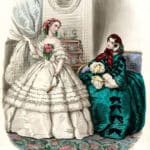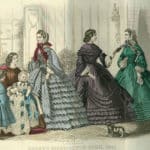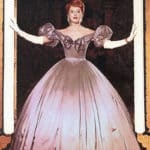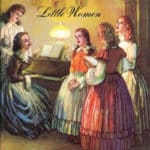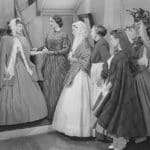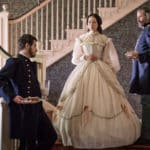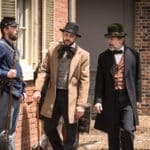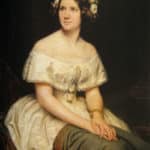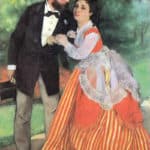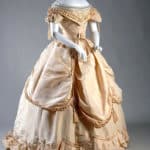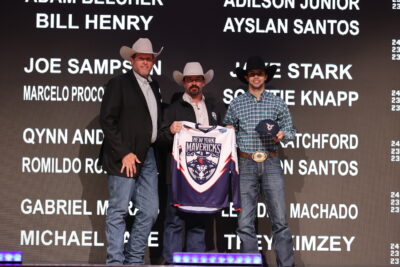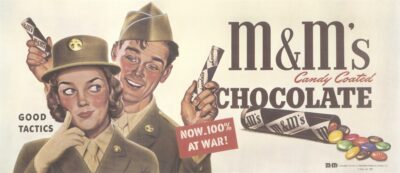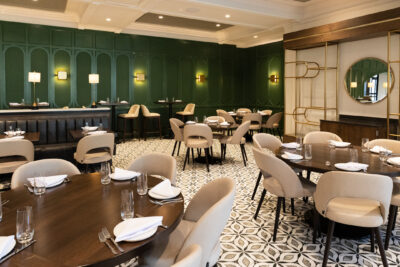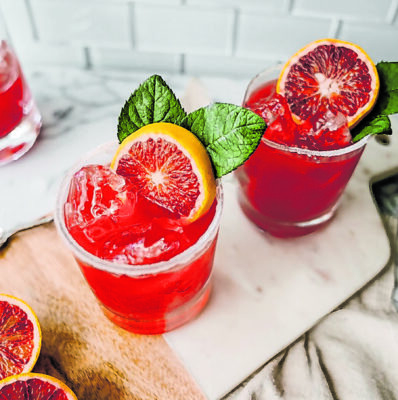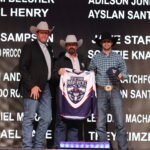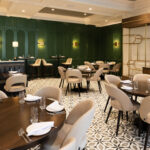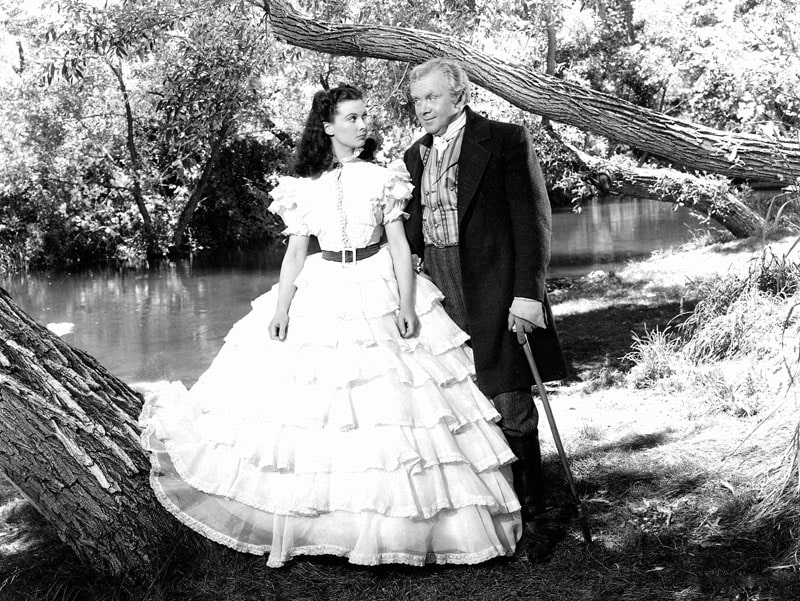
1860s America, while associated with the Civil War also evokes images of Southern ladies in grand ball gowns and gentlemen in three-piece suits and top hats. It was quite a fashionable decade for men and women of means, as illustrated later by films such as Little Women, The King and I and the unparalleled Gone with the Wind, in which Scarlett O’Hara famously ripped down her green velvet drapes and made the iconic dress that is envied still today.
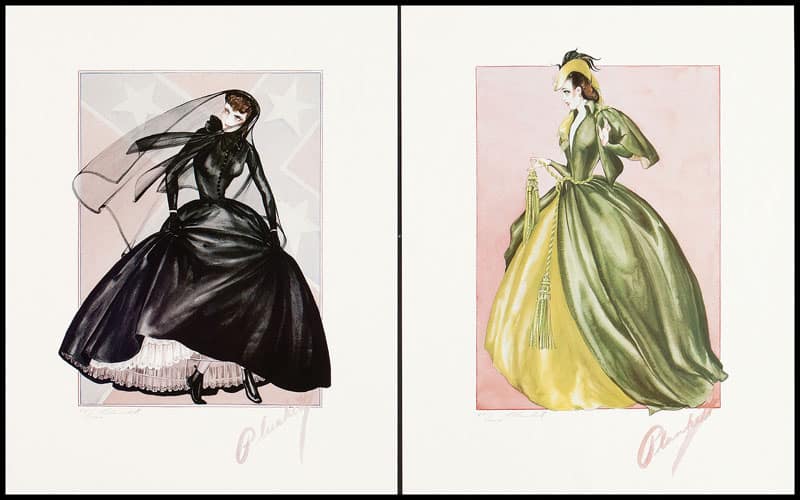
Rags to Riches

Gone with the Wind costume designer Walter Plunkett consulted author Margaret Mitchell’s descriptions to create Scarlett O’Hara’s extravagant wardrobe. O’Hara has Mammy make the dress as an act of desperation, in order to appear respectable when she asks Rhett Butler for financial assistance during her time of need.
It is believed that Plunkett allowed the velvet fabric to be faded by the sun for authenticity before constructing the dress. However, the high saturation of the Technicolor process hid the fading and discoloration, producing a lush appearance on screen. The original dress underwent a lot of damage and alterations in the years since filming, but it has been restored by the University of Texas. A reproduction is currently on display at Georgia’s Holliday Dorsey Fife House Museum, complete with the drapery cord belt and feather cap.
1860s Fashion
Fashion in the United States was influenced by European styles, with women’s full-skirted frocks highly influenced by Queen Victoria herself. Relying on tight corsets, crinolines and hoops, ladies in the West sported bell-shaped silhouettes. Their dresses of silk, velvet, muslin and fine lawn cloth were adorned with lace, embroidery, buttons and ribbons.
Women in the 1860s often wore their hair in braids rolled and pinned into a low bun, and then secured by a decorative hairnet. Bonnets were also popular and were made from a variety of materials, depending on the season.
It was fashionable at the time for men to wear collarless, single-breasted waistcoats with semi-fitted jackets. Their neckties were tied in a bow or looped into a loose knot and fastened with a stickpin. For formal occasions, men wore dark tailcoats and trousers with a white cravat, a standard of evening dress that continued well into the 20th century, though is rarely seen today.
The Abraham Lincoln-style stovepipe hat was common, as well as a variety of other shapes, including the bowler hat, which gained popularity as an informal hat during the decade. Men were known to wear full beards, side whiskers and drooping moustaches.

